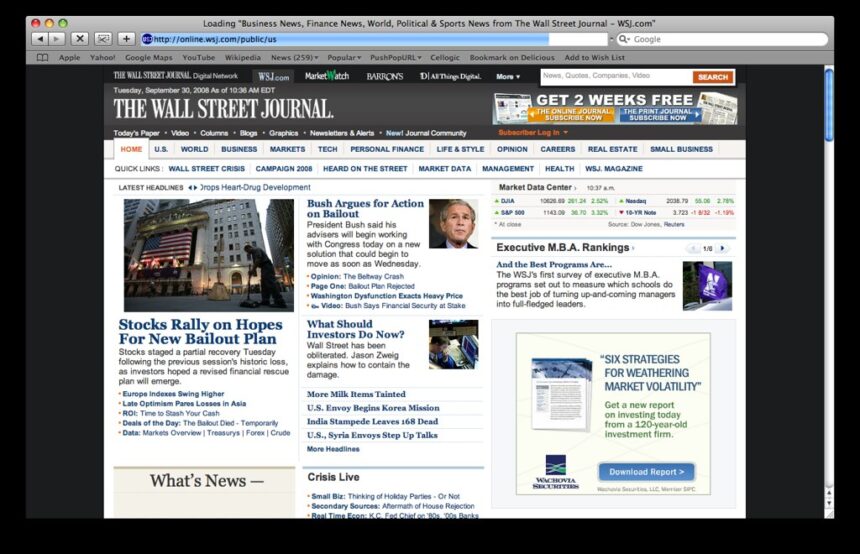The Indian stock exchange has seen significant upheavals in recent times due to a combination geopolitical uncertainty, valuation concerns, as well as foreign investor outflows that have weighed heavily on market sentiment.
The Nifty50 index, India’s benchmark, reached a record high on September 27, 2024 of 26,277, but failed to maintain its momentum and closed at 24,399 last Wednesday, a drop of more than 7%.
Goldman Sachs, a global investment bank, has downgraded its outlook for Indian equities. It is now “neutral”, moving from an “overweighted” stance.
The bank cited the slowdown in India’s economic growth, and its potential impact on earnings of corporates as key reasons for this decision.
Goldman Sachs says that a significant price drop is unlikely due to the strong inflow of domestic capital. However, the market may face a “time correction” within the next three to six month period, which could mean that the stock prices will stagnate rather than fall sharply.
Some market veterans, however, are not reading too much into this correction. They call it “healthy” or even “overdue”.
Healthy correction or cause for concern
Many analysts believe the recent correction is not just healthy, but also overdue.
Navneet Muhot, Managing director and CEO of HDFC Asset Management Company shared his views with CNBC TV-18.
“This was to be expected. This is a healthy corrective action. I think that there was a time when the momentum took over and people didn’t differentiate between good and bad news, and stocks had to rise every day. This cannot continue,” Munhot said.
He said that a “sanity-check” was needed to bring the market to a more sustainable, and that both time and price adjustments would be necessary before things started looking good again.
Ramdeo Agarwal of Motilal Oswal Financial Services echoed Munhot, calling this the “healthiest correction possible” and stating that it had been long overdue.
Agarwal stated that investors had unrealistic expectations of market returns, with some expecting compounded monthly return of 2-3%. This, according to him, is not sustainable.
He reminded investors that the average annual return on the Indian market is 14-15% over the long term. He warned new investors not to set unrealistically high expectations, which could lead them to disappointment.
What about the steep corrections of mid and small cap stocks?
While the overall market has declined, mid- and small-cap stock have been particularly hard hit.
Some stocks in these categories dropped by 25-30%. This has led to concern that the correction could be too severe.
Gautam Sha, the founder of Goldilocks Premium Research urged investors to consider the bigger picture.
In an interview with ET Now he noted that many of these shares had experienced substantial gains in the past year. Some even doubled or tripled in value.
According to Shah, it is completely normal for a correction of 25-30% to occur after such a significant rally.
Shah also encouraged investors to look at these corrections as a chance to buy quality stock at lower prices.
Focus on large-cap companies and, if you’re investing in midcaps or small caps, select only the best-quality companies.
He stressed the importance to distinguish between quality stocks and speculative stocks during times of market volatility.
Are the high FII Outflows merely “adjustments”?
The large outflow of money from foreign institutional investors has been one of the main contributors to recent market volatility.
Bloomberg data shows that overseas funds pulled $7.8 billion net from Indian equity in October, the largest monthly outflows since March 2020.
Foreign investors are reacting to India’s weakening economy and rising inflationary pressures.
Manish Chokhani of Enam Holdings provided some context to the recent FII flows.
He explained to CNBC TV-18 that foreign investors hold between 15-16% of Indian market, which is approximately $800 billion.
He downplayed their significance, noting that FIIs are not completely exiting the market, even though they have taken home $10 billion.
Chokhani stated, “They are tactically readjusting.”
Ramdeo Agarwal also shared a similar opinion, stating that most of the selling was driven by investors rebalancing their portfolios from China to India.
They sell primarily to adjust. They are trying to balance the guys who are overweight in India and underweight in China. They are going back to China to neutralize that and also coming back to India to neutralize that.
He said that the majority of this outflow has already taken place, with only $2-3 billion remaining.
Agarwal does NOT foresee a crises unless the outflows from China reach $25-30 billion. He considers this scenario unlikely at this time.
Analysts believe that the enthusiasm for the Chinese market will also be short-lived because of the structural problems within the economy.
“The FPI sales can continue for a little longer. This is not likely to last long. This enthusiasm for Chinese resurgence is unlikely to last because China has structural problems. Even their fiscal stimuli is unlikely to continue past a certain point because of the high debt-to GDP ratio and the government’s lack of money to stimulate the economic beyond that point,” said V K Vijayakumar Chief Investment Strategist at Geojit Financial Services.
This post Correction ‘healthy,’ FII outflows a tactical readjustment: market veterans on India’s market dip appeared initially on The ICD
This site is for entertainment only. Click here to read more





